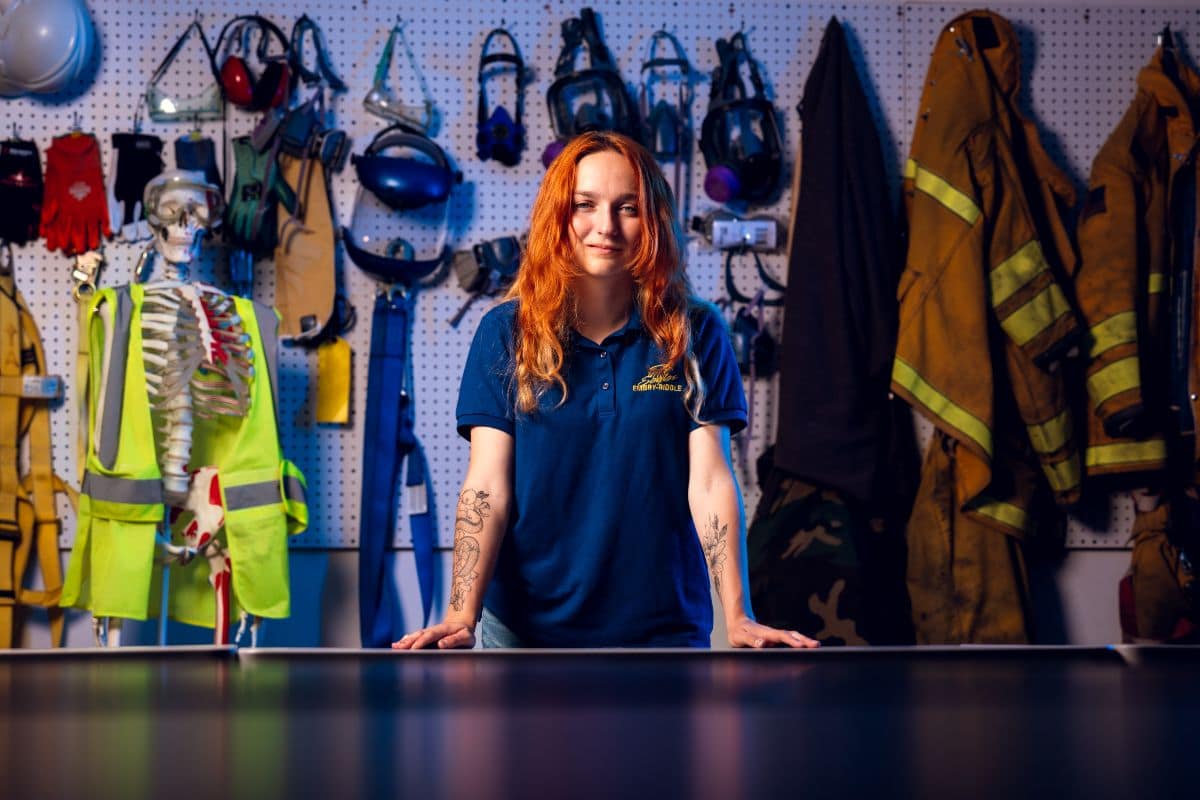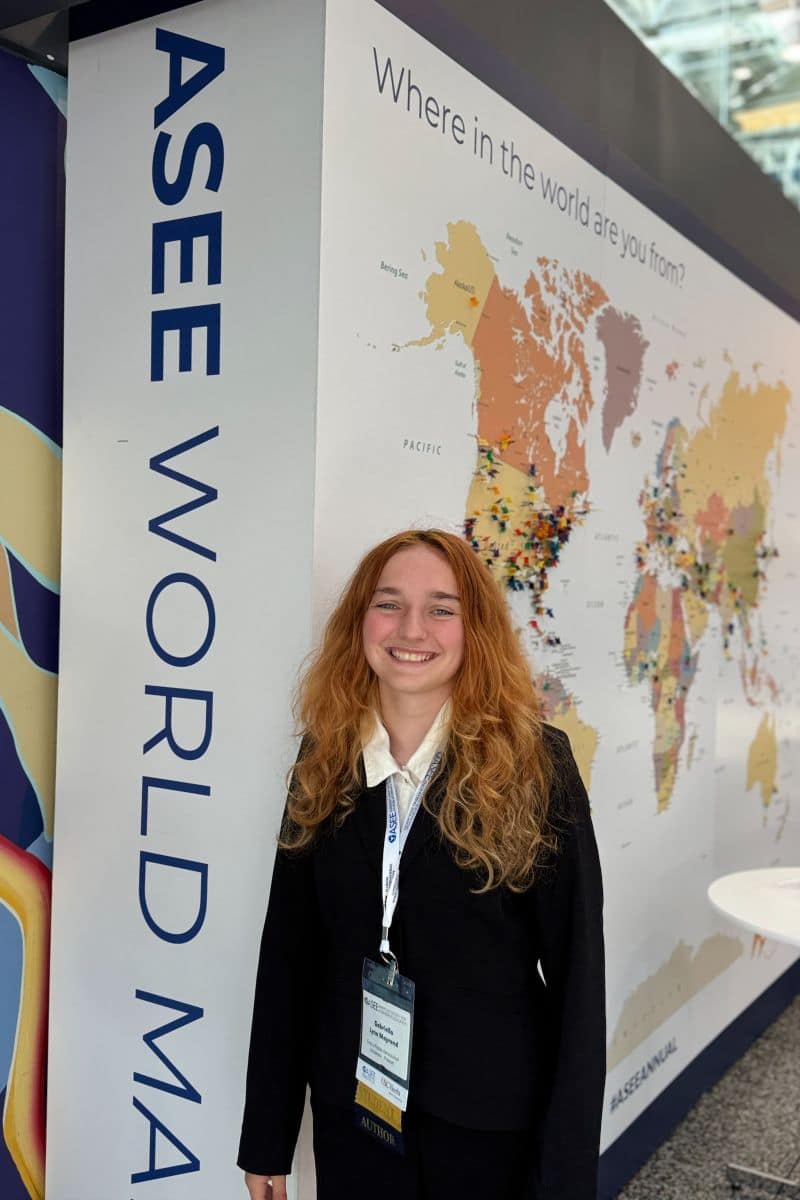Student Research at Embry-Riddle Calls for Female Crash Test Dummies in Safety Testing

Crash test dummies have improved vehicle safety for decades, but one Embry-Riddle Aeronautical University sophomore is studying how to redesign them to better represent women.
Gabriella Mayrend’s interest in vehicle safety began long before she became an Eagle. Growing up in Ann Arbor, Michigan, she developed a passion for drag racing and quickly learned the hazards of the sport.
“I became familiar with the topic the year I got into an automotive repair class,” Mayrend recalled. “It was also the year I started my hobby of drag racing when I dug into some of the dangers.”
During her senior year of high school, Mayrend selected vehicle safety as a research project, uncovering studies showing women passengers are up to three times more likely to suffer from neck injuries and severe whiplash than men.
“Despite these discrepancies, the risk to females has been overlooked in the past,” she said.
The issue then became personal when her mother was injured in a frontal car accident.
Arriving at Embry-Riddle’s Prescott Campus in 2024 as a Mechanical Engineering freshman, Mayrend connected with Dr. Hadi Ali, assistant professor of Aerospace Engineering, to begin exploring how anatomically representative female models could help address the issue.
“I was fortunate to work with Dr. Ali, who guided me through the process and was careful not to overwhelm me with too many new ideas at once,” she said. “Embry-Riddle also has a lot of resources for researchers.”
Crash Data, Clear Patterns
Mayrend analyzed open-source crash data from the National Highway Traffic Safety Administration (NHTSA), comparing the data with anatomical research and reporting. The findings she reviewed confirmed trends identified in earlier studies.
“Seventeen percent more females die in car accidents than males, and they are 73 percent more likely to be injured,” Mayrend said.

Mayrend presented her research at the American Society for Engineering Education (ASEE) conference in June. (Photo: Embry-Riddle/Gabriella Mayrend). The standard crash test dummies used to set vehicle safety benchmarks are known as Hybrid III models, which is modeled on “fiftieth percentile” adult man, equating to a man who is 5-foot-9 and about 170 pounds. The female dummy is smaller, representing a “fifth percentile” woman who is 4-foot-11 and about 110 pounds. These test models don’t reflect the full range of real-world body types, Mayrend said.
“Decisions about safety standards, design regulations and testing protocols are shaped by policies that don’t always represent everyone equally,” she added.
With the support of Dr. Ali and Embry-Riddle’s Undergraduate Research Institute (URI), Mayrend presented her paper, “Engineering Models and Public Policy: The Case of Crash Test Dummies and the Role of Engineering Education,” at the American Society for Engineering Education (ASEE) conference in June.
“It’s exciting to see the impact our undergraduates are having early in their research careers,” said Dr. Anne Boettcher, assistant dean of Research. “Opportunities like these can lay the foundation for years of meaningful research, while also giving students the confidence and skills to address complex challenges in their fields.”
Ali said that Mayrend’s work reflects the best of what undergraduate research can be.
“I’ve been delighted to see Gabby’s careful analysis of a policy problem that is influenced by an engineering design and that had a personal impact on her life,” said Ali. “She represents the kind of engineer who can respond to contemporary challenges of technology in society while transcending disciplinary boundaries.”
From the Road to the Launchpad
For Mayrend, presenting at the engineering education conference was a milestone and a roadmap for the future. The event allowed her to share her work, collaborate on ideas and build connections, including with the Drive Action Fund, a nonprofit advocating for equity in transportation safety.
This collaboration, along with support from the Arizona Space Grant, is shaping her next steps in exploring crash test dummy models, including how properly sized female models might be applied to aerospace safety testing.
As she prepares to bring her crash test dummy project to the next level, Mayrend says the experience has shown her how engineers can make a difference in advocating for change.
“Our work can help challenge systemic gaps,” she added. “My research will put information and real-world data out to the public, as well as those in the government. We have proof that this is an issue.”

 Keaton S. Ziem
Keaton S. Ziem